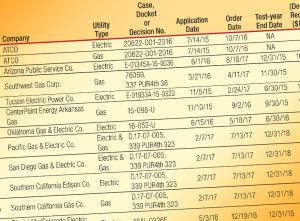Question Worth Asking, But Answer’s Unclear
Phillip Cross is Public Utilities Fortnightly’s legal editor. He also serves on the editorial staff of Utility Regulatory News, published by Public Utilities Reports, Inc., PUF’s publisher. URN reports weekly on ratemaking and regulatory decisions issued by state public utility commissions.
This year's annual survey of electric and gas retail rate cases lists as many cases decided as in some prior years. (We have been doing this for some thirty-five years now.) And the percentage awards for rate of return on common equity appear to be holding pretty much steady, as compared with prior periods. Nevertheless, the last twelve months saw a significant number of the nation's top utilities experiencing a major increase in rates. Here is the survey table in PDF format.

Which factor drives the result? Which factor takes the lead these days in pushing up or down the size of the awarded rate increase?
One way to look at this is by comparing the total revenue a utility claims that it needs — to both cover expenses and pay a fair rate of return — with the amount actually awarded by the commission. When combined with a high level of projected investment, the difference between the return on equity requested, and the figure actually awarded, demonstrates the importance both play in setting the total revenue requirement that consumers must pay in rates.

